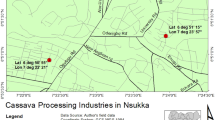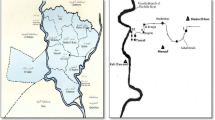Abstract
Arsenic is a ubiquitous element in the environment and occurs naturally in both organic and inorganic forms. Under aerobic condition, the dominant form of arsenic in waters is arsenate, which is highly mobile and toxic. Arsenic poisoning from drinking water remains a serious world health issue. There are various standard methods for arsenic removal from drinking waters (coagulation, sorption, ion-exchange reactions or methods of reverse osmosis) and alternative methods, such as biosorption. Biosorption of arsenic from natural and model waters by native or chemically modified (with urea or ferric oxyhydroxides) plant biomass prepared from sawdust of Picea abies was studied. The kinetic of the adsorption process fitted well the pseudo second order adsorption model and equilibrium was achieved after 2 h. The results showed that biosorption was well described by both Langmuir and Freundlich isotherms. The maximum biosorption capacity of the sawdust modified with ferric oxyhydroxides, evaluated by Langmuir adsorption model, was 9.259 mg/g, while the biosorption capacity of unmodified biosorbent or biosorbent modified with urea was negligible. The adsorption capacity is comparable to results published by other authors, suggesting that the prepared chemically modified biosorbent has potential in remediation of contaminated waters.
Similar content being viewed by others
References
Abdel-Ghani, N. T.; Hefny, M.; El-Chagbaby, G. A. F., (2007). Removal of lead from aqueous solution using low cost abundantly available adsorbents. Int. J. Environ. Sci. Tech., 4 (1), 67–73 (7 pages).
Aksu, Z., (2001). Equilibrium and kinetic modeling of cadmium (II) biosorption by C. vulgaris in a batch system: Effect of temperature. Sep. Purif. Tech., 21 (3), 285–294 (10 pages).
Boddu, V. M.; Abburi, K.; Talbott, J. L.; Smith, E. D.; Haasch, R., (2008). Removal of arsenic (III) and arsenic (V) from aqueous medium using chitosan-coated biosorbent. Water Res., 42 (3), 633–642 (10 pages).
Cernansky, S.; Urik, M.; >Sevc, J.; Hiller, E., (2007). Biosorption of arsenic and cadmium from aqueous solutions. Afr. J. Biotechnol., 6 (16), 1932–1934 (3 pages).
Chmielewská, E.; Sabová, L.; Jesenák, K., (2008). Study of adsorption phenomena ongoing onto clinoptilolite with the immobilized interfaces. J. Therm. Anal. Calorim., 92 (2), 567–571 (5 pages).
Daus, B.; Wennrich, R.; Weiss, H., (2004). Sorption materials for arsenic removal from water: A comparative study. Water Res., 38 (12), 2948–2954 (7 pages).
DeMarco, M. J.; SenGupta, A. K.; Greenleaf, J. E., (2003). Arsenic removal using a polymeric/inorganic hybrid sorbent. Water Res., 37 (1), 164–176 (13 pages).
Eblin, K. E.; Bowen, M. E.; Cromey, D. W.; Bredfeldt, T. G.; Mash, E. A.; Lau, S. S.; Gandolfi, A. J., (2006). Arsenite and monomethylarsonous acid generate oxidative stress response in human bladder cell culture. Toxicol. Appl. Pharm., 217(1), 7–14 (8 pages).
Freundlich, H., (1906). Über die adsorption in lösungen. Z. Phys. Chem., 57, 384–470 (7 pages).
Goldberg, S.; Johnston, C. T., (2001). Mechanism of arsenic adsorption on amorphous oxides evaluated using macroscopic measurements, vibrational spectroscopy, and surface complexation modeling. J. Colloid. Interf. Sci., 234 (1), 204–216 (13 pages).
Hiller, E.; Veselskâ, V.; Majzlan, J., (2007). Arsenic mobility in stream sediments and impoundment material as evaluated by column and batch experiments. J. Hydrol. Hydromech., 55 (4), 223–235 (13 pages).
Ho, Y. S., (2006). Second-order kinetic model for the sorption of cadmium onto tree fern: A comparison of linear and non-linear methods. Water Res., 40 (1), 119–125 (7 pages).
Ho, Y. S.; McKey, G., (1999). Pseudo-second order model for sorption processes. Proc. Biochem., 34 (5), 451–465 (15 pages).
Hughes, M. F., (2002). Arsenic toxicity and potential mechanisms of action. Toxicol. Lett., 133 (1), 1–16 (16 pages).
Jonsson, J.; Sherman, D. M., (2008). Sorption of As (III) and As (V) to siderite, green rust (fougerite) and magnetite: Implications for arsenic release in anoxic groundwaters. Chem. Geol., 255(1–2), 173–181 (9 pages).
Kannan, N.; Sundaram, M. M., (2001). Kinetics and mechanism of removal of methylene blue by adsorption on various carbons: A comparative study. Dyes Pigments, 51 (1), 25–40 (16 pages).
Lagergren, S., (1889). Zur theorie der sogenannten adsorption gelöster stoffe. Kungliga Svenska Vetenskapsakademiens. Handlingar, 24, 1–39 (39 pages).
Langmuir, I., (1918). The adsorption of gases on plane surfaces of glass, mica, and platinum. J. Am. Chem. Soc., 40 (9), 1361–1403 (43 pages).
Lin, T.; Wu, J., (2001). Adsorption of arsenite and arsenate within activated alumina grains: Equilibrium and kinetics. Water Res., 35 (8), 2049–2057 (9 pages).
Lorenzen, L.; van Deventer, J. S. J.; Landi, W. M., (1995). Factor affecting the mechanism of the adsorption of arsenic species on activated carbon. Miner. Eng., 8(4–5), 557–569 (13 pages).
Loukidou, M. X.; Matis, K. A.; Zouboulis, A. I.; Liakopoulou-Kyriakido, M., (2003). Removal of As (V) from wastewaters by chemically modified fungal biomass. Water Res., 37 (18), 4544–4552 (9 pages).
Malakootian, M.; Nouri, J.; Hossaini, H., (2009). Removal of heavy metals from paint industries wastewater using Leca as an available adsorbent. Int. J. Environ. Sci. Tech., 6 (2), 183–190 (8 pages).
Mamisahebei, S.; Jahed Khaniki, G. R.; Torabian, A.; Nasseri, S.; Naddafi, K., (2007). Removal of arsenic from aqueous solution by pretreated waste tea fungal biomass. Iran J. Environ. Health Sci. Eng., 4 (2), 85–92 (8 pages).
Murugesan, G. S.; Sathishkumar, M.; Swaminathan, K., (2006). Arsenic removal from groundwater by pretreated waste tea fungal biomass. Bioresource Technol., 97 (3), 483–487 (5 pages).
Pokhrel, D.; Viraraghavan, T., (2006). Arsenic removal from an aqueous solution by a modified fungal biomass. Water Res., 40 (3), 549–552 (4 pages).
Pokhrel, D.; Viraraghavan, T., (2008). Arsenic removal from an aqueous solution by modified A. niger biomass: Batch kinetic and isotherm studies. J. Hazard Mater., 150 (3), 818–825 (8 pages).
Rahaman, M. S.; Basu, A.; Islam, M. R., (2008). The removal of As (III) and As (V) from aqueous solutions by waste materials. Bioresource Technol., 99 (8), 2815–2823 (9 pages).
Sato, Y.; Kang, M.; Kamei, T.; Magara, Y., (2002). Performance of nanofiltration for arsenic removal. Water Res., 36 (13), 3371–3377 (7 pages).
Seki, H.; Suzuki, A.; Maruyama, H., (2005). Biosorption of chromium (VI) and arsenic (V) onto methylated yeast biomass. J. Colloid. Interf. Sci., 281 (2), 261–266 (6 pages).
Singh, D. B.; Prasad, G.; Rupainwar, D. C., (1996). Adsorption technique for the treatment of As (V)-rich effluents. Colloid. Surface. A, 111(1–2), 49–56 (8 pages).
Song, S.; Lopez-Valdivieso, A.; Hernandes-Campos, D. J.; Peng, C.; Monroy-Fernandez, M. G.; Razo-Soto, I., (2006). Arsenic removal from high-arsenic water by enhanced coagulation with ferric ions and coarse calcite. Water Res., 40 (2), 364–372 (9 pages).
Weber, W. J.; Morris, J. C., (1963). Kinetics of adsorption on carbon from solution. J. Sanit. Eng. Div. Am. Soc. Civ. Eng., 89 (17), 31–60 (30 pages).
WHO, (1996). Health criteria and other supporting information. In: World Health Organization, Guidelines for drinking-water quality, 2nd, 2, Geneva.
Author information
Authors and Affiliations
Corresponding author
Rights and permissions
About this article
Cite this article
Urík, M., Littera, P., >Sevc, J. et al. Removal of arsenic (V) from aqueous solutions using chemically modified sawdust of spruce (Picea abies): Kinetics and isotherm studies. Int. J. Environ. Sci. Technol. 6, 451–456 (2009). https://doi.org/10.1007/BF03326084
Received:
Revised:
Accepted:
Published:
Issue Date:
DOI: https://doi.org/10.1007/BF03326084




